
The fire devastated a large part of Toronto’s commercial and industrial centre. Over 125 businesses were burnt out, most of them manufacturers and importers of fabrics and clothing, paper goods, books, drugs, chemicals, hardware, and machinery. Many of the factories and warehouses that burned were less than twenty years old, and had been built as architectural showcases for their owners’ prosperity, modern commercial methods, and business acumen. Here are a few of the companies affected.
Wholesale stationers and bookbinders
51-53 Wellington Street West
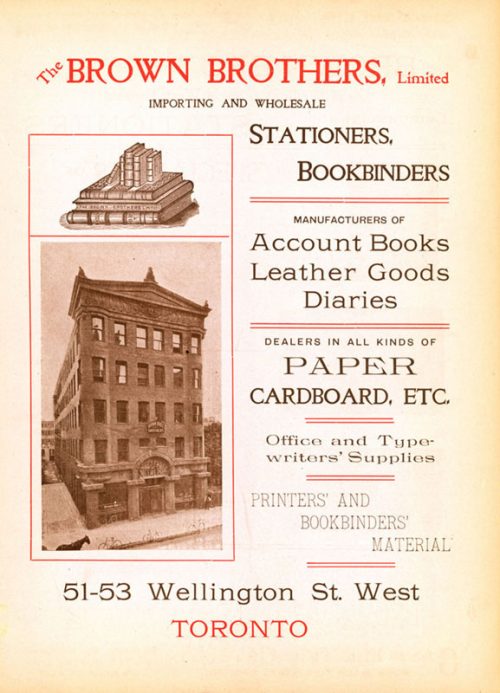
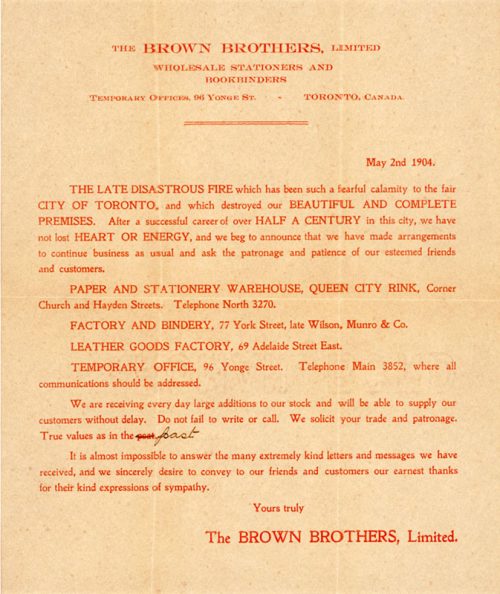
The Brown Brothers building at 51-53 Wellington Street West had been built only four years before the fire. It boasted up-to-date design and modern (and fully electrical) machinery; Bookseller and Stationer reported in March 1900, “The impression forced on one…is that of completeness, that nothing more could be added to make the business run more easily or economically…the building is in all respects most modern and complete.” In the arch over the front doors, terra cotta reliefs depicted bookbinders at work.
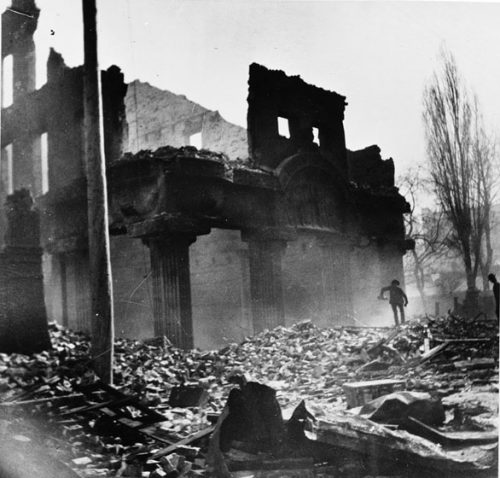
Bookbinders and sellers of stationery supplies, The Brown Brothers had been in business in various locations in Toronto since 1846. They had moved to their new building on Wellington Street West only four years before the fire. They rebuilt quickly after the fire, and moved into a new (and larger) building on the same spot by the end of 1904.
Dry goods wholesalers
63-65 Bay Street (at Wellington, south-east corner)
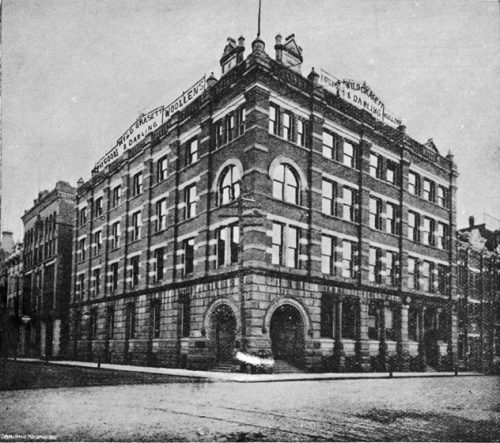
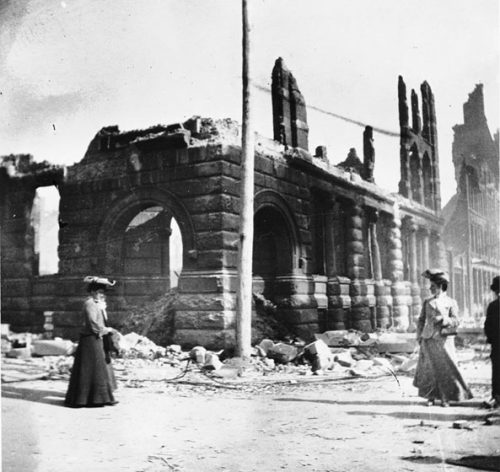
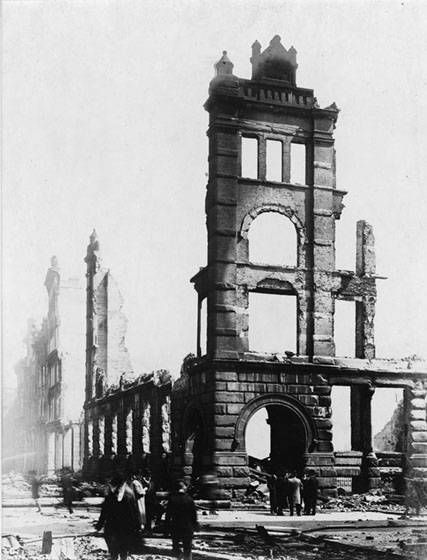
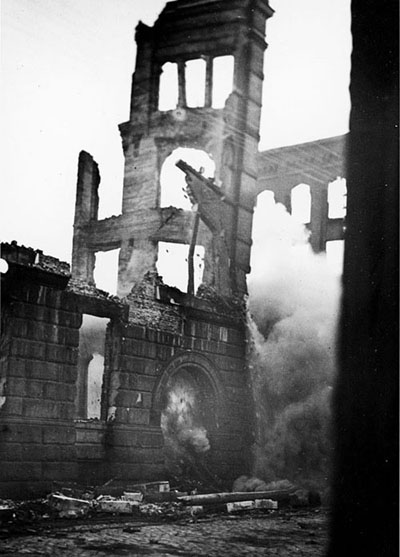
The premises of dry goods wholesalers Wyld-Darling Co. Ltd., at the south-east corner of Bay and Wellington, are one of the most identifiable ruins seen in photographs of the fire damage. The standing ruins, like those of other buildings, were dynamited by the City Engineer’s Department because of fears they would fall without warning and injure workers clearing the site. The company set up temporary quarters soon after the fire, but closed entirely before the end of the year.
Dry goods wholesalers
64-68 Bay Street (at Wellington, south-west corner)
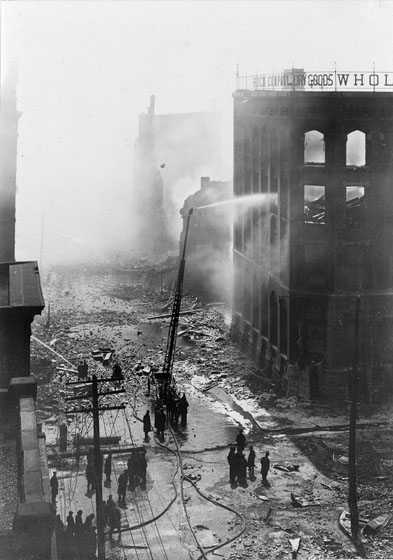
The W.R. Brock Company was an established dry goods wholesale firm. Its building had been built in the 1870s, and added onto several times after that. One of the earliest to catch fire, the building might have survived a less fierce fire. It was equipped with sprinklers both inside and outside, which, although they could not extinguish the fire completely, contained it and prevented it from spreading to other buildings to the west. Unfortunately, after several hours of the blaze, the city’s water pressure dropped because of the demand on the water mains, and the building’s own water tank ran dry. The Brock building finally lost the fight.
The company soon built a much larger warehouse, using both its own lot and the lot directly to the west, the former premises of Rolph Smith & Co., also victims of the fire.
Printers, bookbinders and wholesale stationers
68-70 Front Street West
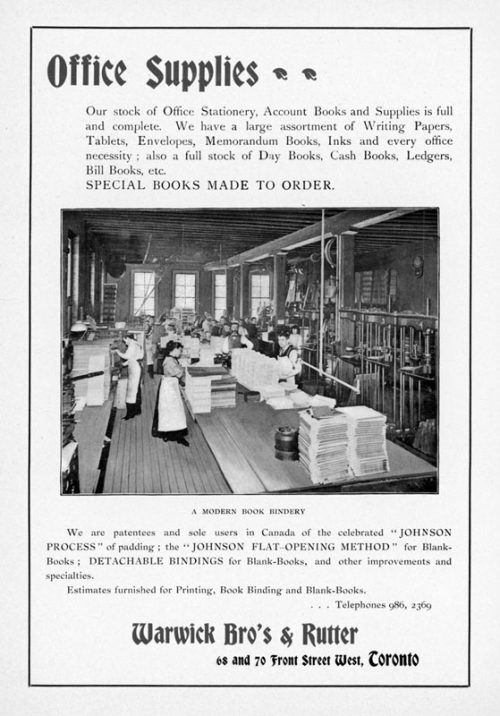
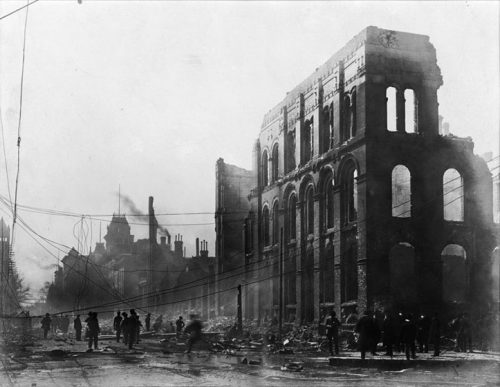
The Warwick Brothers & Rutter building stood just past the long finger of brick sticking up in the left half of the photograph. The building just past it (with the cupola) is the Queen’s Hotel. The hotel escaped the fire because of a small park standing between it and the Warwick Brothers & Rutter building.
Warwick Brothers & Rutter was one of many companies in the stationery and printing industries affected by the fire. The firm was the Ontario Government printer, and copies of many older government documents were lost in the fire. After the fire, the company built a new facility at King Street and Spadina Avenue, just west of what is now the Spadina Hotel.
Flour mill
2 Bay Street
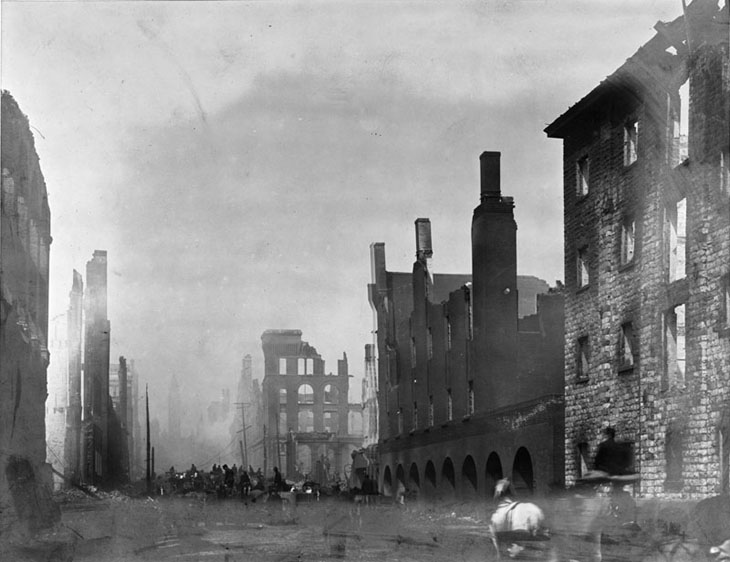
By the time of the fire, the stone building of the M. McLaughlin & Co. flour mill had been used as a flour mill (under various owners and names) for decades. According to The Globe newspaper of the time, the building had originally served as a jail. After the fire, the company does not seem to have reestablished itself in Toronto.
Manufacturers of grocery items
32-34 Front Street West
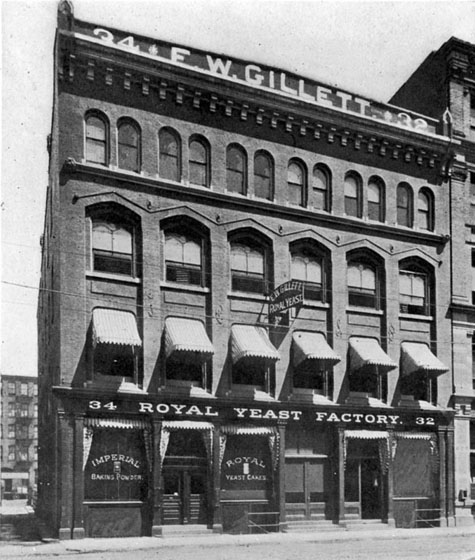
Ruins of the building can be seen at the right in the photograph of the Kilgour brothers factory, below
The Gillett Company’s ad in The Globe on April 21, 1904, read, “Our entire plant (building and machinery) was totally consumed by the awful conflagration which swept part of Toronto on Tuesday night, April 19th, and we must therefore ask your indulgence for a few weeks. Fortunately we have a duplicate set of machinery stored safely in another building, and this will enable us to turn out goods within a reasonable time. Every Wholesale Grocer in the Dominon has a stock of ROYAL YEAST, GILLETT’S LYE, MAGIC BAKING POWDER, Etc., so we are hoping, by the careful use of goods now in their hands, that no one will be inconvenienced. ‘Gillett’s Goods Are the Best,’ and will be more popular than ever.”
Bag and paper box manufacturers
21-23 Wellington Street West
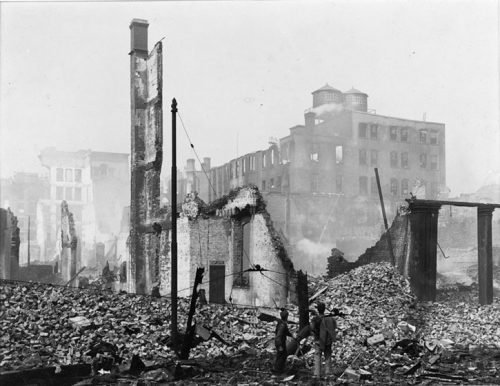
The Kilgour Brothers were wise enough to install water tanks on the roof of their paper box and bag factory. These tanks helped stop the fire from moving farther east, where it might have devastated Yonge Street as well. The Kilgour building was damaged by the fire (and flooded by the water) but not destroyed, and the company was able to start production again within a few days.
Back to: The Great Fire of 1904